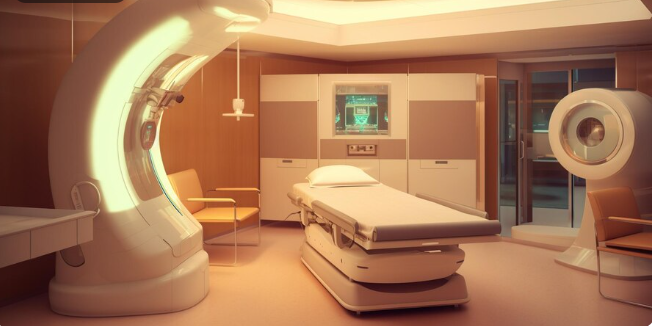Chronic pain and injury can significantly impact quality of life, but diagnostic ultrasound services Halifax are transforming how these conditions are identified, treated, and monitored. From pinpointing sources of discomfort to guiding targeted interventions, ultrasound offers a safe, non-invasive, and effective tool throughout recovery. Let’s explore how ultrasound supports every stage of chronic pain and injury management.
1. Real-Time Soft-Tissue Visualization
Ultrasound excels at imaging muscles, tendons, ligaments, nerves, and bursae. Known as musculoskeletal (MSK) ultrasound, it delivers high-resolution, real-time images, helping identify tears, inflammation, or enthesopathy. Compared to MRI, ultrasound offers dynamic assessment—moving joints during scan reveals impingements or tendon issues that static imaging might miss.
Key Benefits:
- Immediate visual feedback during physical exams
- Consistent evaluation throughout rehabilitation
- Affordable and accessible compared to MRI
2. Assisting Guided Pain Management Procedures
Interventional pain management techniques such as nerve blocks and joint injections have been transformed by ultrasound guidance. It improves safety and effectiveness by enabling precise needle positioning in real time.
Applications:
Facet Joint & Medial Branch Blocks: Ultrasound-guided injections show comparable pain relief to fluoroscopy methods with fewer risks and radiation
Peripheral Nerve Injections: Sciatica, piriformis syndrome, and nerve entrapments are addressed precisely with ultrasound-guided agents like dextrose or steroids
This improves chronic back, hip, and limb pain management while minimizing side effects.
3. Enhancing Soft-Tissue Healing with Elastography
New ultrasound methods that measure tissue stiffness, such as shear-wave elastography (SWE), can help identify tendon deterioration, nerve damage, and muscle anomalies early on.
As patients heal, clinicians can measure the quality of tissue recovery rather than just its size, providing objective progress tracking.
4. Portable & Patient-Centred Imaging
Ultrasounds are radiation-free, portable, and patient-friendly in contrast to CT or MRI. They are perfect for usage in rural settings, sports medical offices, and outpatient clinics. Ultrasound is more convenient, repeatable, and quick for a lot of people.
5. Cost-Effective and Convenient
Procedures guided by ultrasound are less expensive and time-consuming than those involving CT or fluoroscopy. They provide safety, portability, and quick direction—often in a single session—without exposing users to ionising radiation.
6. Supporting Rehabilitation & Outcome Measurements
MSK ultrasonography measures healing in addition to diagnosis. In order to follow quantifiable recovery metrics like rotator cuff or Achilles tendon healing—which are essential for individualised rehab plans—frequencies can measure the thickness of tendons, muscles, and nerves.
Common Usage Examples:
- Tendinopathy: Evaluates Achilles and patellar tendons to decide when to escalate therapy or shift exercise plans
- Muscle Injury Monitoring: Tracks muscle regeneration and scar tissue resolution
7. Integration with Inpatient and Outpatient Care
Why Wait Imaging and other diagnostic ultrasonography clinics incorporate these instruments into their treatment plans. Their knowledgeable staff employs ultrasonography to quickly identify injuries, provide targeted interventions, and track results, all of which help patients recover more quickly and with fewer setbacks.
8. Combining Imaging Modalities
Despite its versatility, ultrasonography is frequently used in combination with CT or MRI. To provide complete care, radiologists may employ CT to evaluate bone fractures and ultrasound to direct soft-tissue injections or monitor tendon repair.
9. Future Directions in Ultrasound Support for Chronic Pain
Advanced Elastography: Regular nerve and ligament stiffness monitoring
AI Integration: Automatic detection of fluid accumulations or tendon rips
Remote Clinics & Tele-Ultrasound: Bringing expert advice to more rural and isolated locations
10. Key Takeaways for Patients
- Assess joint structures and soft tissues in a dynamic manner.
- Accurately administer shots to alleviate persistent pain
- Use objective measurements to track healing.
- Savour comfortable, reasonably priced, and safe imaging.
- Integrating diagnostics with integrated care teams
Final Thoughts
Diagnostic ultrasonography services are essential for helping people recover from injuries and manage chronic pain. Dynamic imaging, ultrasound-guided operations, and progress tracking are just a few of the ways that ultrasound enables safe, patient-friendly, individualised treatment solutions. Why Wait Imaging provides prompt, professional, and compassionate care that is suited to your healing needs for Halifax residents looking for cutting-edge diagnostic ultrasound services.
Ask your healthcare practitioner about the role ultrasound will play in your recovery process so you can take charge of your comfort and function.

